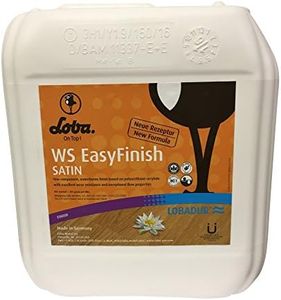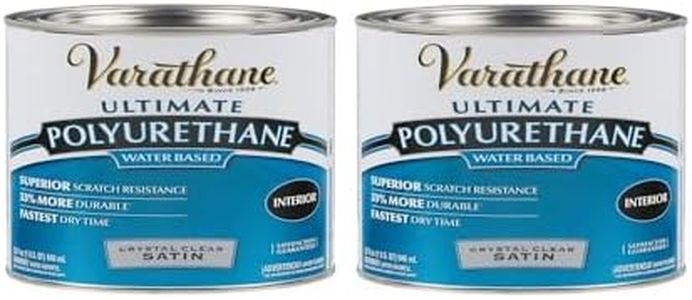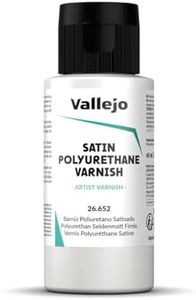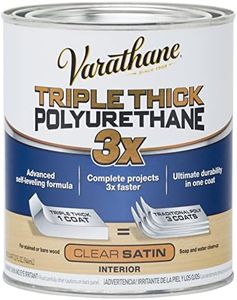We Use CookiesWe use cookies to enhance the security, performance,
functionality and for analytical and promotional activities. By continuing to browse this site you
are agreeing to our privacy policy
10 Best Polyurethane For Floors
From leading brands and best sellers available on the web.Buying Guide for the Best Polyurethane For Floors
Choosing the right polyurethane for floors is about understanding the type of protection and the look you want for your wood surfaces. Polyurethane acts as a shield against scratches, scuffs, liquids, and daily wear, prolonging the beauty and durability of your floors. The key is to match the product's characteristics to your floor's usage and your personal preferences for appearance and maintenance. Start by considering how much foot traffic your floors endure, your desired level of shine, your ability to ventilate the area during application, and how quickly you need the floors to be ready for use.Base Type (Oil-Based vs. Water-Based)The base type indicates whether the polyurethane is oil-based or water-based. Oil-based polyurethane tends to deliver a warm, amber tone with enhanced durability, making it great for high-traffic areas or families with pets, but it does take longer to dry and emit stronger fumes. Water-based polyurethane is clearer, dries faster, and has less odor, making it a good fit for light-colored woods or spaces where you want minimal disruption. When picking, consider the color of your floor and how long you can wait before the floor is ready for use, as well as your sensitivity to smells.
Sheen Level (Gloss, Semi-Gloss, Satin, Matte)Sheen level refers to the amount of shine the polyurethane leaves on your floors. Gloss finishes have the highest shine and tend to highlight the beauty of wood, but they also show scratches and dirt most. Semi-gloss offers a balance between shine and maintenance, being popular in many homes. Satin provides a soft, low-sheen look that hides imperfections and footprints, while matte has the least shine and gives a natural, contemporary appearance. Picking the right sheen depends on your style—glossier finishes are eye-catching, while lower sheens are more forgiving in busy households.
DurabilityDurability describes how well the polyurethane protects against scratches, scuffs, and wear. Oil-based versions are often harder and more suited to busy areas, whereas water-based formulas still offer good protection but might wear a bit faster. If your floors see a lot of shoes, pets, or moving furniture, look for a polyurethane specified as 'high-traffic' or certified for commercial use; otherwise, standard formulas will be sufficient for quieter spaces.
Drying and Curing TimeDrying and curing time tells you how quickly the polyurethane becomes touch-dry and when you can resume normal use of your floor. Water-based polyurethanes usually dry within a few hours and cure in a few days, while oil-based ones may need up to day to dry and a week or more to fully cure. If you need a quick return to daily life, faster drying water-based products are helpful. Think about your schedule and how long you can tolerate restricted access to the area when choosing.
Application MethodThe application method refers to whether polyurethane is best applied with a brush, roller, or as a spray. Some products are more user-friendly, allowing for easier touch-ups and less risk of visible marks, while others may require more careful technique. If you're new to applying finishes, look for options labeled as 'easy to apply' or 'self-leveling.' For professionals or those with experience, more specialized products may offer finer results.
VOC ContentVOC content tells you how much volatile organic compounds are emitted during application. High VOCs mean strong smells and the need for good ventilation, while low-VOC or VOC-free options are safer for indoor air and preferred in homes with children, elderly, or anyone sensitive to chemicals. If indoor air quality is important to you, or if you can't open windows widely, select a low-VOC formula.














